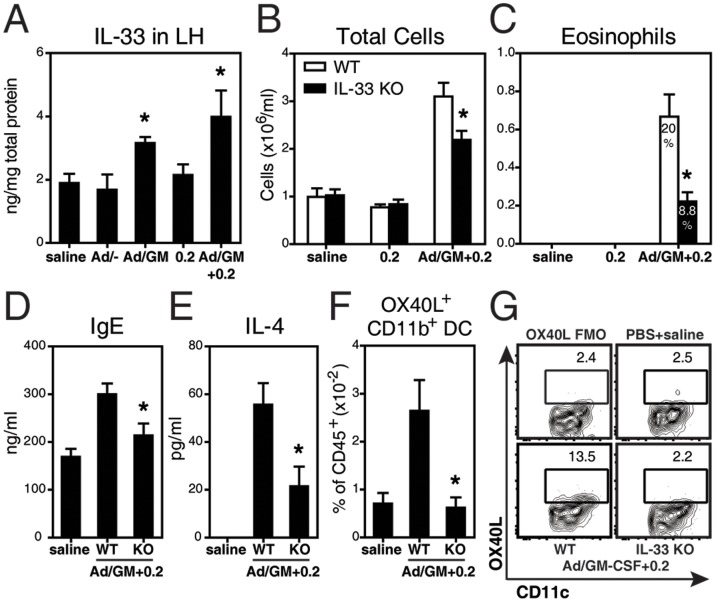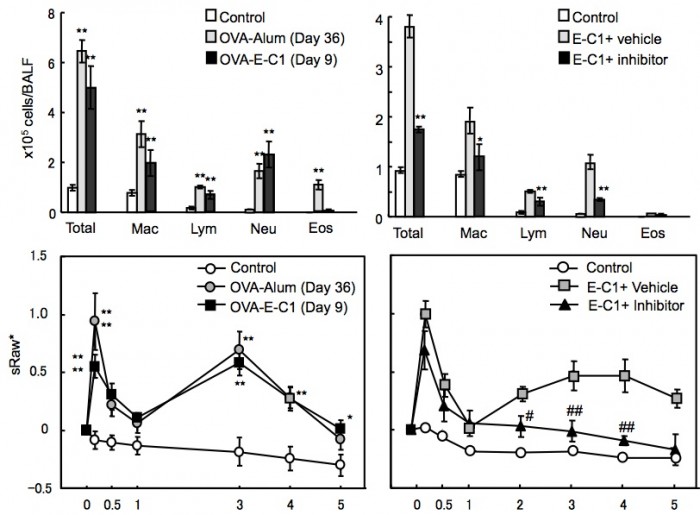-
Posts
926 -
Joined
-
Last visited
Content Type
Profiles
Forums
Events
Posts posted by Function
-
-
Hello everyone
I was wondering something while designing a diagnostic model for brain tumours for my thesis ...
Suppose you have two tests do differentiate high-grade tumours from low-grade tumours. Let's call these tests A and B.
- Test A checks whether tumoural metabolism exceeds a predefined threshold, let's say alpha. Let's say that test A measures averaged metabolism value of all cells exceeding 1.5 times background metabolism value. When this averaged metabolism value exceeds alpha, test A is positive.
- Test B checks whether tumoural metabolism exceeds a higher predefined threshold, let's say beta. Let's say that test B measures averaged metabolism value of all cells exceeding 2.0 times background metabolism value. When this averaged metabolism value exceeds beta, test B is positive.
Let's assume that higher tumour metabolism correlates with higher grade and thus, when test A or B is positive, a tumour is deemed high grade. When one of the tests is positive and another is negative, whether a tumour is deemed high grade or low grade is based on the demonstrating or exclusive power of test A and B, and thus, their positive and negative likelihood ratios, respectively.
Let's say the pre-test odds for high grade is 1. Let's say the positive likelihood ratio of test A is LRA and the positive likelihood ratio of test B is LRB.
When tested separately:
- Odds for high grade in positive test A will be 1 * LRA
- Odds for high grade in positive test B will be 1 * LRB
My question is: when both tests are ran, can you simply say that the post test odds = 1 * LRA * LRB? If there is a problem, it will most likely be that both tests cannot be called independent of one another, but I don't know whether those tests must be completely independent from one another. After all, consider this: both tests measure the metabolism value of a group of cells that exceed a predefined value. Value beta is higher than value alpha, so all cells satisfying the conditions for test B automatically satisfy the conditions for test A. However, test A includes more cells, since test A requires a lower threshold value to be exceeded for cells to be included in the test.
Argument à décharge (in favour of combining both tests to post test odds = 1 * LRA * LRB): the tests might be considered somewhat independent since the cells that satisfy conditions for test A, but not for test B (that is, all cells that show metabolism values between 1.5 and 2.0 times background metabolism value), are independent from the cells in test B.
Thank you for your insights.
Regards
0 -
Graphs
in The Lounge
14 hours ago, hypervalent_iodine said:Looks like GraphPad Prism, though they're fairly generic looking. Prism is (I think) pretty commonly used in the biological sciences, so I wouldn't be surprised if that's where they come from.
Yup, I'd also think that it's GraphPad Prism. Thanks!
0 -
Graphs
in The Lounge
Hey everyone
Does someone know what programme is used to make graphs as in the figures attached? Doesn't look like SPSS or R, but they seem to be the product of the same programme, and their layout is very recurring among scientific (medical) literature. I'd like to adapt that style so I'd like to know what programme they were made in.
Thanks.
Functionella blah blah
0 -
No, we're left the choice whether we indent or choose the blank space
 0
0 -
It's for my thesis. Not for a journal article.
0 -
Hello everyone
A small nitpick for those who love typography and typesetting and such.
In my thesis, I indent the first line of all paragraphs but the first ones. However, I'm wondering whether I should indent the first line of new paragraphs starting under tables or figures, when the table/figure is aligned at the top of the page? It looks a bit silly when indented, but it might indeed denote the separation of this paragraph from the former one on the previous page, and might therefore be obligatory (as far as we can call something obligatory in typography).
What would be your personal preferences?
Thanks!
Baccalaureus functionellus
0 -
I think he's thinking of it as directly toxic etc., just as would antacidics directly neutralise stomach acid?
Can't think of another example than antacidics, actually. Or certain laxatives.
0 -
10 hours ago, Endy0816 said:
Which font is it?
What happens in a new file if you try and use that font?
Futura Pro (Book & Medium & Small Caps Book & Small Caps Medium)
No problems in other documents ... I'm starting to think it might have something to do with the file size and all the images in it?
0 -
5 minutes ago, Strange said:
It shouldn't be, if you use styles. It should take a few seconds.
Admittedly, each release of Word has made it harder to do this properly ... it is may be near impossible now.
I know, but margins, headers that are mirrored on even/odd pages, section breaks ...
0 -
Just now, StringJunky said:
Do it to a copy of the original.
Yes, of course. I'm not even thinking of messing around with the original
 0
0 -
There are no problems opening the file in Word 2010. I will try your recommendations, studiot. Thanks! Will keep you updated.
0 -
8 minutes ago, StringJunky said:
That eliminates a corrupt Word then. It's the file. What file format is it in?
Hmm ... That's what I feared. I'm going to see if I can open it up with MS Office 2010. Still have a product key lying around somewhere
0 -
I sure do have back-ups. But typesetting is quite time-consuming itself and I don't feel like doing it over and over again.
1 minute ago, StringJunky said:Have you tried uninstalling/rebooting/reinstalling Word?
I did, unfortunately.
0 -
Hello everyone
I don't know a lot about corrupted files and such, but I fear my thesis document might be one, or be close to being one.
Since yesterday (actually since the last big Windows update), everytime I want to open my thesis, Word crashes (Word has stopped working and sometimes, Windows error reporting has stopped working), unless I open it in safe mode, or when I'm quick enough to select everything and change the font.
Changing the font, however, is no option. Don't feel like doing that. However, there might be arguments that the font itself is somewhat conflicting, since the problem does not occur using another font. But like I said, that's not really an option. Yes, that's how serious I am about fonts. After all, suspicious that it occurred only since yesterday, no?
I'd love it if someone would trust me to send them the thesis file and the font installation files (no viruses, guaranteed), to check where things go wrong, because I simply don't know where to start ...
Thank you very much!
Function
0 -
Thanks!
For the following: "1-[(2S,4S,5R)-2-[¹⁸F]fluoro-4-hydroxy-5-(hydroxymethyl)tetrahydro-2-furanyl]-5-methyl-2,4(1H,3H)-pyrimidinedione"
Should the S's and the H's be in italics?
0 -
1 hour ago, John Cuthber said:
Good luck with herding cats.
Make a point early on in the thesis of citing the IUPAC names and the INN where it exists then use an abbreviation that makes sense to you. That way you will (probably) be consistent.
Anyone who knows the field well enough to "judge" your thesis will be aware of the variations available. As long as you are consistent they can't complain much.
If you happen to know who will be looking at your work, find a paper they wrote, and use the same abreviations they use.
You state IUPAC and INN. However, 3'-Deoxy-3'-[18F]fluorothymidine is neither of both. The IUPAC name for that would be 1-[4-fluoranyl-5-(hydroxymethyl)oxolan-2-yl]-5-methylpyrimidine-2,4-dione.
Then what is 3'-deoxy-3'-[18F]fluorothymidine?
0 -
Consensus and insights by experts in the field

Thanks, John!
0 -
Hello everyone
The ones following my posts regularly will know that I'm writing my thesis on, among other things, nuclear imaging of primary brain tumours.
Finding accepted, standardised nomenclature for radiotracers, however, is driving me crazy. I found the Molecular Imaging and Contrast Agent Database on the NCBI website, which offers some abbreviated and full chemical names of radiotracers I'm discussing. However ... I can't seem to agree with the chemical name they give to the substance which has the INN of fludeoxyglucose (18F). Here are some of the names given in the MICAD I need evaluated by some real chemical-linguistic purists here (I'm a bit of a perfectionist and I don't like the discrepancy in ways that fludeoxyglucose (18F) can be written, among other tracers) (abbreviations are given after the hyphen):
- O-(2-[18F]Fluoroethyl)-L-tyrosine - [18F]FET
- 3'-Deoxy-3'-[18F]fluorothymidine - [18F]FLT
- [18F]Fluorocholine - [18F]FCH
- L-[methyl-11C]Methionine - [11C]MET
- p-(2-[18F]fluoroethyl)-L-phenylalanine - [18F]FEP
And then this:
- [18F]Fluoro-2-deoxy-2-D-glucose - [18F]FDG
- In the text beneath the table containing this chemical name, however, they describe "2-[18F]Fluoro-2-deoxy-D-glucose", which itself is already in discrepancy with the earlier reported name above.
- Additionally, a more commonly used name for this radiotracer, by almost every author, seems to be "2-Deoxy-2-[18F]fluoro-D-glucose".
Can someone please give some feedback on the nomenclature of these 6 radiotracers? Also mind the italics where given (by the MICAD). What would be the most correct full name for [18F]FDG? I acknowledge that these names are not fully fundamentally chemical (else there would be something with "ethylammonium" in [18F]FCH), but let's ignore that nonetheless.
A possible solution could've been to go with the INN of every tracer, however, it seems like only [18F]FDG has an approved INN ...
Thanks!
Function
EDIT: Can this thread be moved to Organic Chemistry or Applied Chemistry?
0 -
6 hours ago, Strange said:
“Conventionally”? Implies that there is no absolute/objective meaning, but the convention is to use that value.
I missed out on this one. Thanks, Strange. "Conventionally" might just do fine!
0 -
Just now, koti said:
Its just my subjective opinion, dont worry about it. I’d preffer „Aproximately”
But it's not approximately. It's exactly, e.g., "50 % of the SUVmax" that would be the threshold of the MTV50 delineative isocontour A50. It's just that some researches have arbitrarily chosen this value and seen that this value may indeed correspond with true tumoural metabolic volume. However, I cannot say that we have chosen this threshold arbitrarily, because other authors have already shown that it may indeed, to some degree, correspond to some metabolic tumour volume.
Additionally, multiple such thresholds have been described: the most important thresholds are 50 % of the SUVmax, 41 % of the SUVmax, 1.3 times the SUVbackground, 1.5 times the SUVbackground (that is, the mean SUV of random background - normal - tissues), and 1.6 times the SUVbackground. And I will define all these isocontour-delineated MTVs. But thus, these isocontours are not generated fully automatically, yet semiautomatically, that is, still based on a manual input of values that are "..." (?) chosen.
0 -
23 minutes ago, studiot said:
Well I don't like the word 'isocontour', since that is saying the same thing twice.
I suppose the choice will depend upon the purpose of the procedure.
Is this for standardisation or to set a baseline for future measurements/treatments?
In my thesis I will define the MTVs of tumours based on 5 such "experience-based" thresholds to compare these between different tumour types.
0 -
4 minutes ago, koti said:
A little pretentious but that's just me.
In what way? It's for my Master's thesis :/
0 -
What about "semiquantitatively"?
0 -
Hello
Since English is not my native language, I'd like to ask you guys to find a word that describes the following:
A threshold for a positron emission tomography isocontour (that is, all voxels [cf. three-dimensional pixels] with a same standardised uptake value, or SUV) could be e.g. 50 % of the SUVmax (that is, the maximal SUVmax within the region that is bordered by this "A50" isocontour).
Several authors have described that the A50 isocontour may be a good cut-off to get a certain metabolic tumour volume (MTV50).
However, delineation with this A50 isocontour is not fully objective or automatically done, since a cut-off value (threshold) of 50 % of the SUVmax must still be set manually.
I don't like to say that the 50 % threshold is "arbitrarily" chosen (since it's not completely random, though based on several observations and author-specific findings and consensus), but what could I say?
Thanks
F
0





Algoritm coefficient correlations
in Computer Science
Posted
Hello everyone
Consider a 10 x 10 table with 10 by 10 variables and in the cells their correlation coefficient. Suppose that I want to select every combinatory set of variables that have a correlation smaller than 0.1. Is there a way in, let's say, Excel, or SPSS, to do this?
E.g., VAR1 has a correlation smaller than 0.1 with VAR2, VAR3, and VAR4.
VAR2 and VAR3 have a correlation smaller than 0.1, VAR2 and VAR4 too, but VAR3 and VAR4 have a correlation of 0.2
The resultant sets are (1) VAR1, VAR2, and VAR3, and (2) VAR1, VAR2, and VAR4.
You can imagine that this gets really complicated for 10 variables of which some have correlation smaller than 0.1 with at least 6 other variables.
In short: of 10 variables, I need to define every possible set that is made from any combination of variables, of which their inter-variable correlation is less than 0.1.
How can I do this?
Thank you very much!
F.